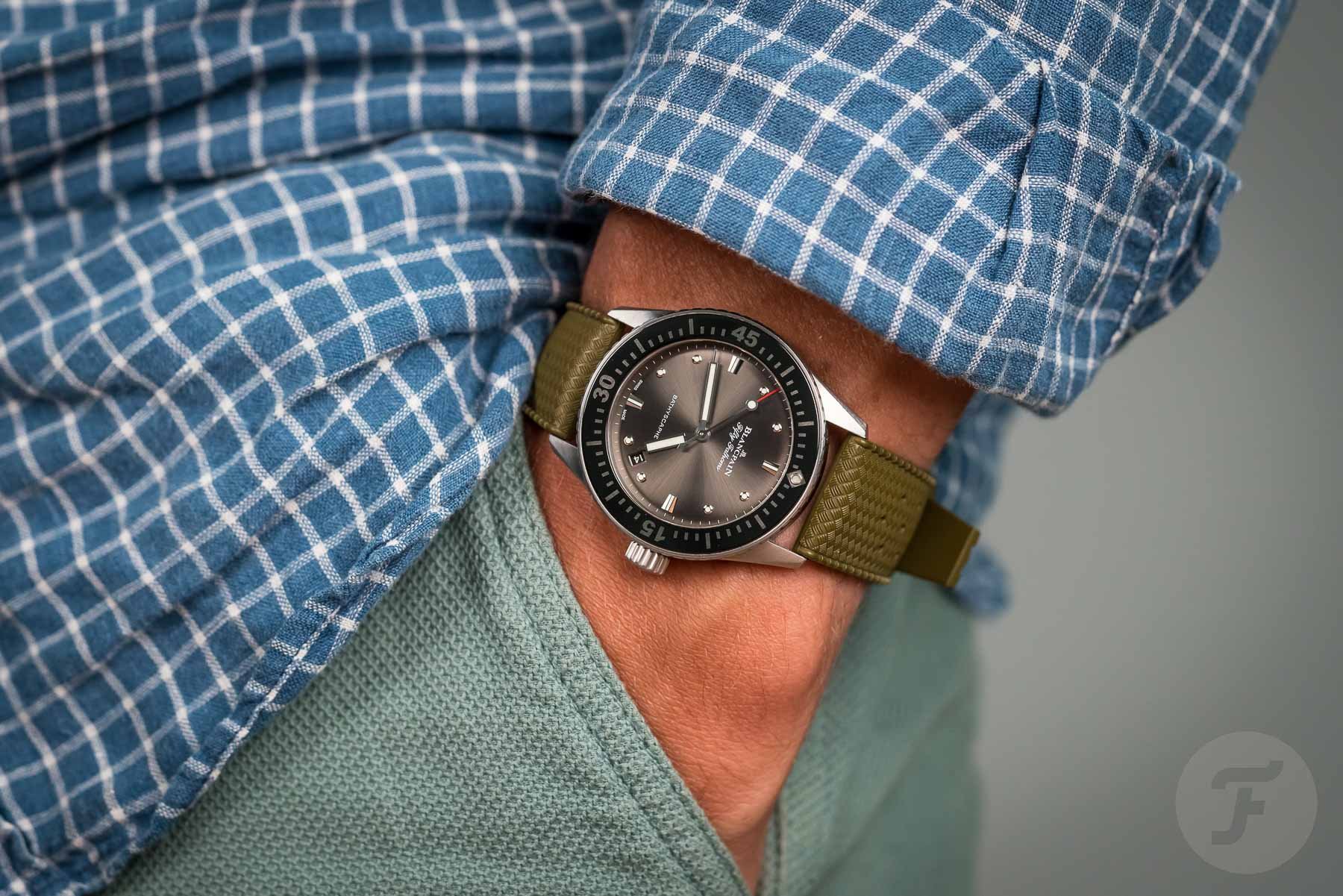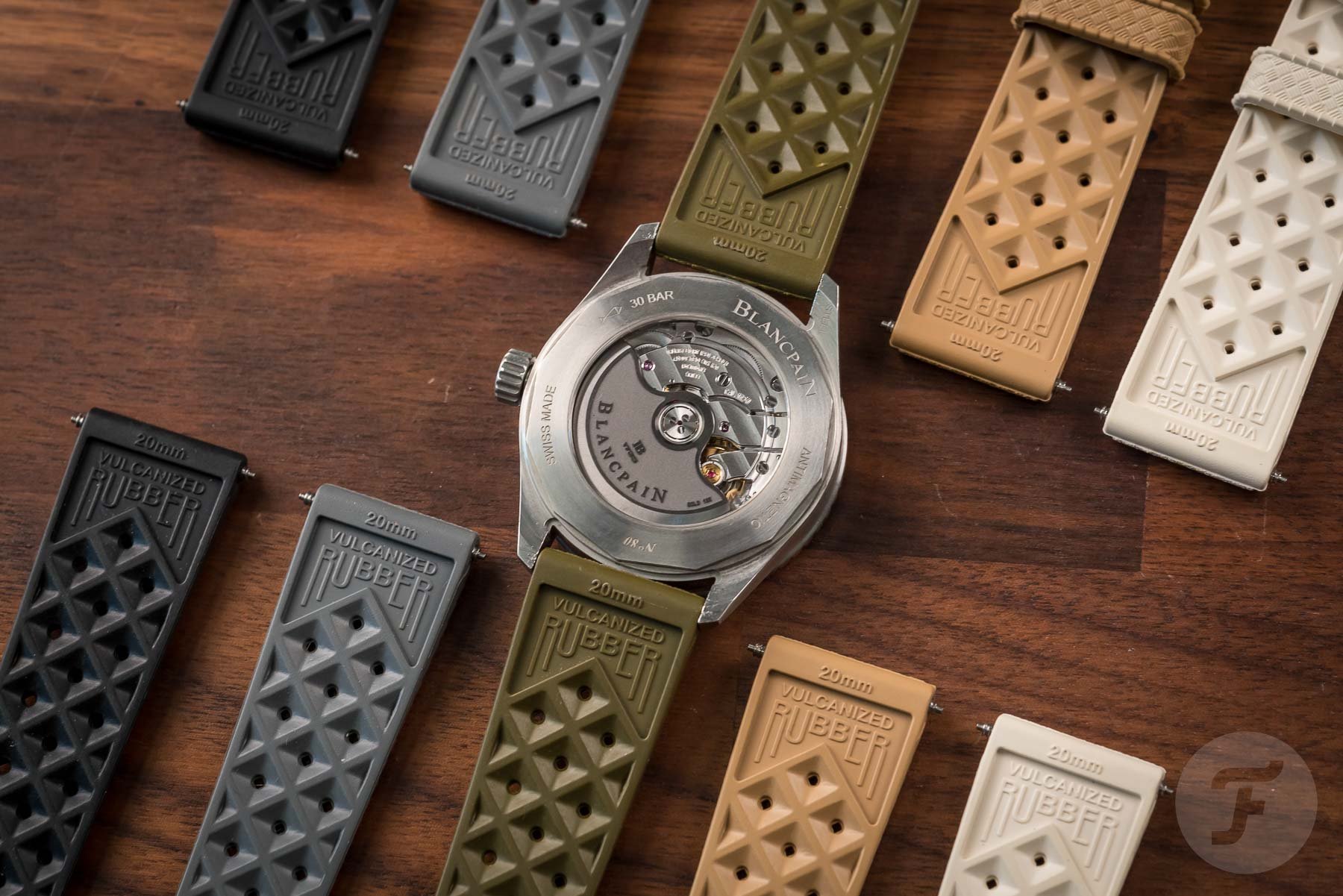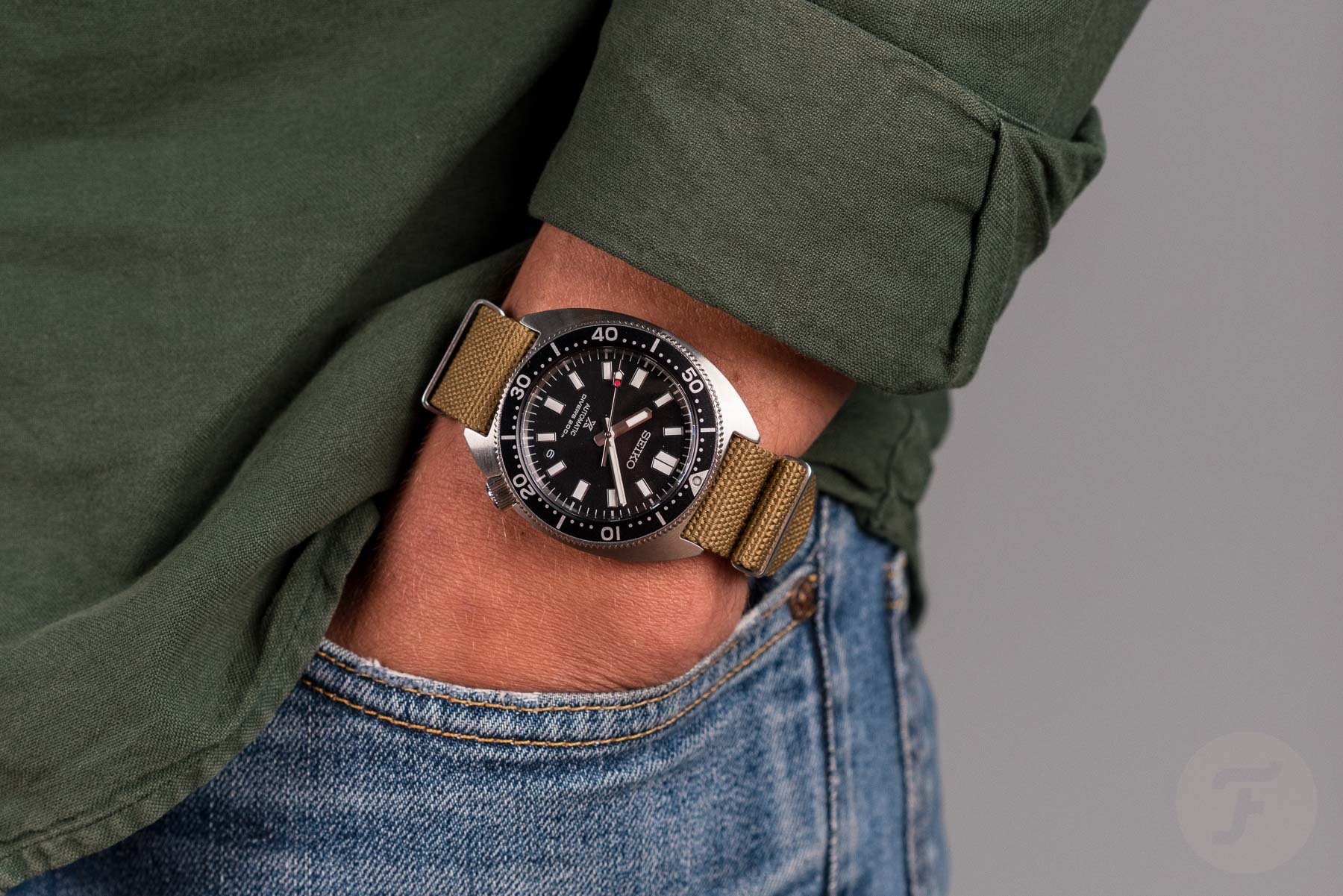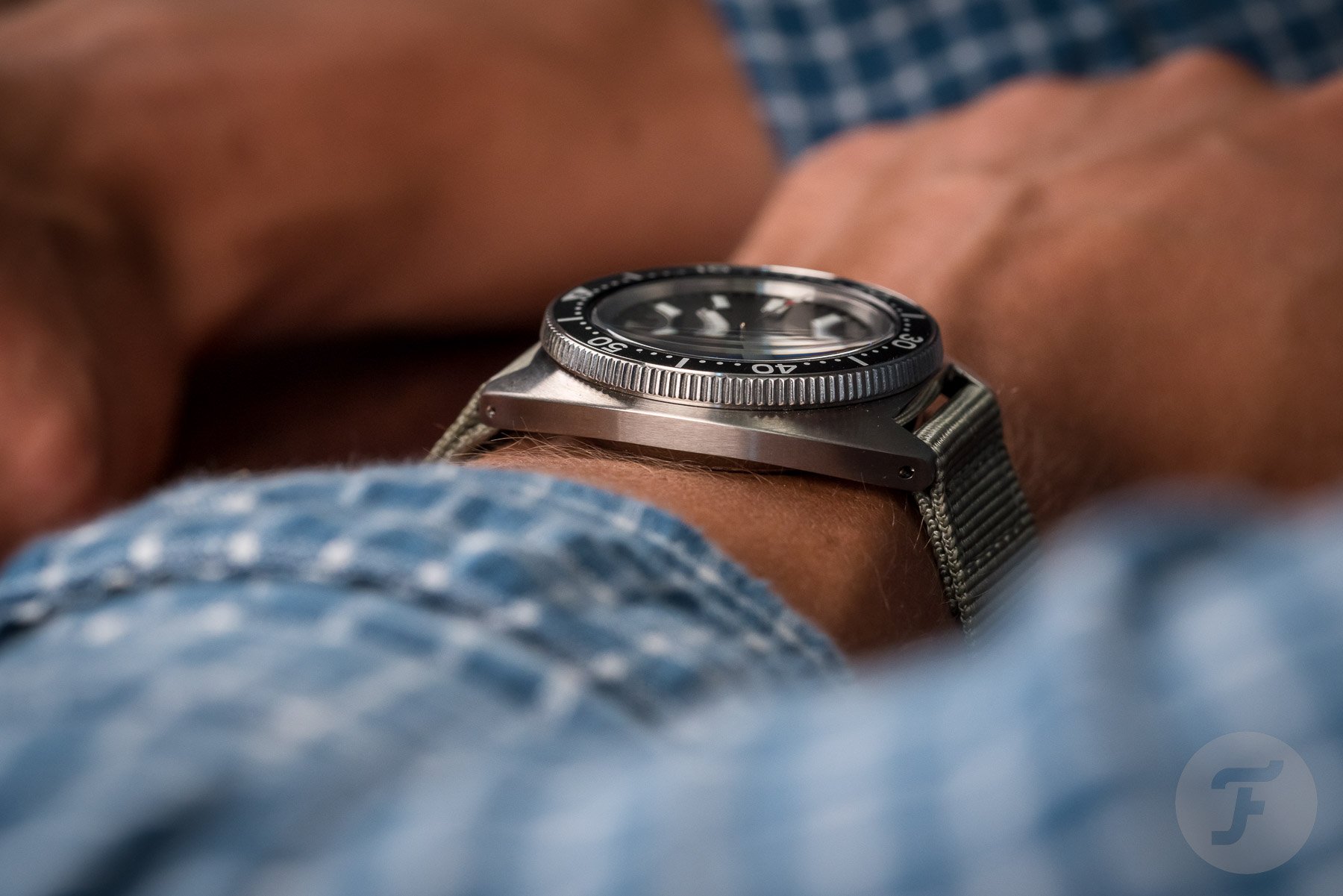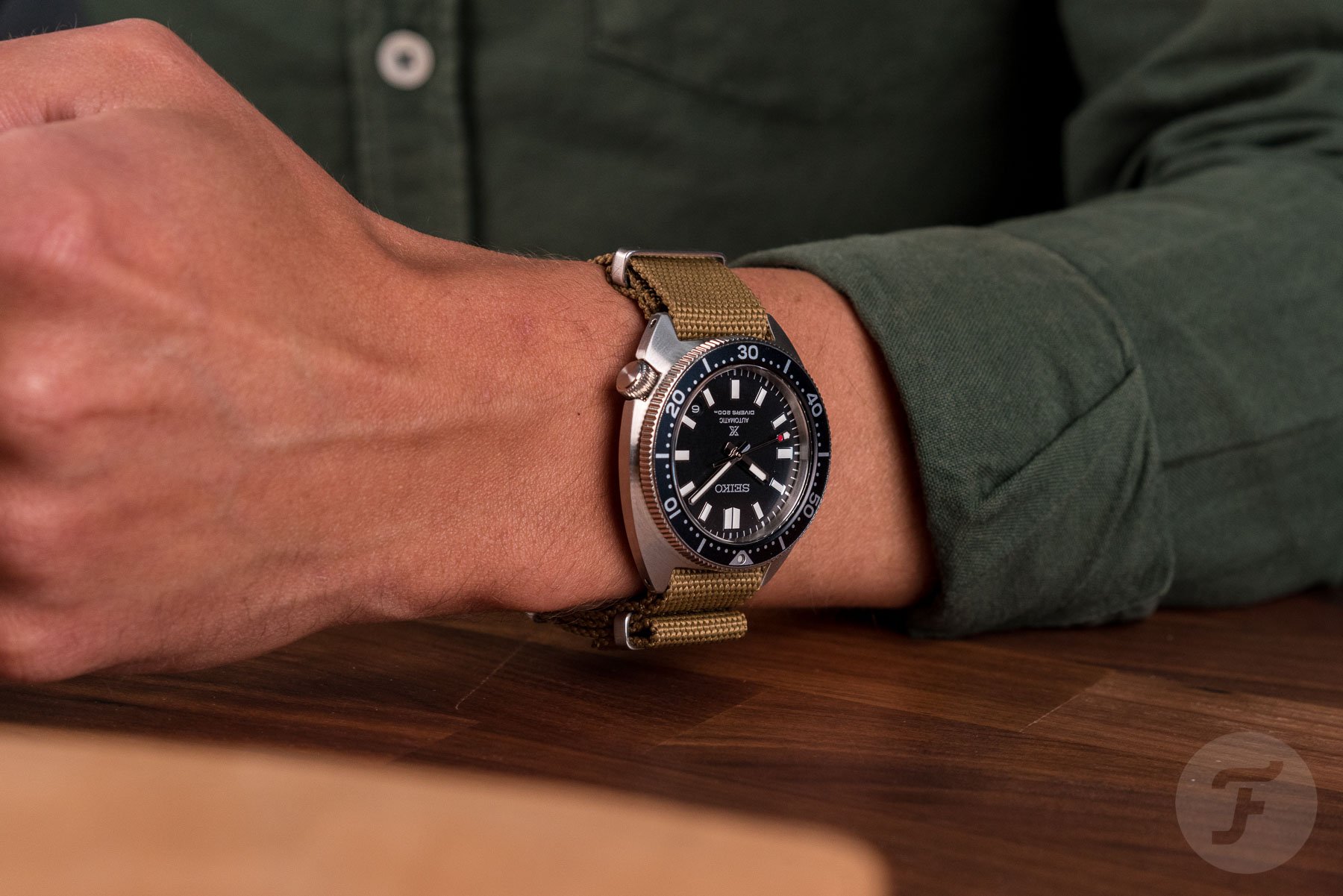Entry-Level Vs. Haute Horlogerie: Comparing My Seiko SPB317 To My Blancpain Bathyscaphe
Don’t worry, I won’t be comparing these two classics to the bone. Yes, this will be a proper head-to-head, and I’ll go over many of their characteristics. However, to enumerate all the specs one by one would totally miss the point. It’s more about how I experience both of these divers. In the end, I buy a watch for the feeling it gives me when I’m wearing it. Specs and finishing definitely play a big part in my enjoyment, but the price of a watch also calibrates my expectations of what it’s supposed to offer me. I’ll use my Seiko SPB317 and my Blancpain Fifty Fathoms Bathyscaphe to try to explain what I mean. Today, it’s entry-level versus Haute Horlogerie.
But first, a little intro of the watches at hand. The designs of both of these divers were heavily inspired by their vintage ancestors. The 38mm Blancpain Fifty Fathoms Bathyscaphe was introduced in 2012 in white as a ladies’ model. Later on, in 2017, it was also introduced in gray, like mine, and blue. You can clearly see the similarities in the design language of the vintage Bathyscaphe from the ’50s and the modern one. But the new one is a much freer interpretation than what Seiko did with this year’s SPB317. Apart from the date and the indices, that watch is almost identical to the original 6105-8000 from the late ’60s. And I think there’s something to say for both approaches.
A complete makeover
I imagine that the people at Blancpain started their design process by asking: what would the Bathyscaphe look like if it debuted today? From there, they likely started to completely recreate the Bathyscaphe from the ground up using today’s tech and know-how. Yes, the shape of the fully brushed case is very similar to the original Bathyscaphe, and the sunburst dial can also be found on vintage versions of the watch. But other than that, the designers went for a complete makeover.
The bezel insert is now made of ceramic and injected with Liquidmetal for the markings. The dial has a magnificent texture, which creates one of the best sunburst effects I’ve seen on a watch. At times, it really looks as if you’re watching a ray of sun hitting the water’s surface. It’s mesmerizing. And although the hand-applied indices at each quarter are still quite classic shapes, the ones in between are now round instead of rectangular. It’s impressive to see how bright those minuscule dots of lume actually light up in the dark. That’s probably why the designers didn’t think it was necessary to make them any bigger.
But of course, the movement also got quite an upgrade in comparison to its vintage predecessor. The caliber 1150 provides 100 hours of power reserve. There’s an 18K gold rotor smoothly revolving on ball bearings, and the finishing of the movement is done to a level that deserves the “Haute Horlogerie” title. Best of all, you can behold all its beauty through the transparent sapphire case back.
Modern while preserving the original’s vibe
I think the people who developed this modern 38mm version did such a great job because, to me, the watch still utterly embodies the Bathyscaphe’s character. Especially with its modest dimensions — it’s only 11mm thick and measures just 44mm from lug to lug. But the designers have managed to achieve this while showing off what can be done with cutting-edge technology. This is such a nice example of how to respectfully bring back a vintage classic through a completely modernized reinterpretation. Chapeau, Blancpain! Now let’s take a look at Seiko’s approach.
An iterative update
Let’s be completely honest here. The people at Seiko simply looked at their sales records of the past years and saw that the re-editions of the 62MAS (SPB143) and the Willard (SPB151) were selling like hotcakes. In that case, why not do a re-edition of the 6105-8000 as well? And it looked like the general audience likes something as close to the original as possible, so why invest a lot of time and money on a complete makeover? Although my words might sound a bit harsh, this is, of course, a completely logical way of thinking.
And yes, the watch has been modernized in a few ways. To comply with ISO standards, there’s now a full lume plot at three o’clock, and the date was (almost invisibly) moved to the four-thirty position. I guess that’s also the reason why Seiko used more stretched indices on the new version than on the original. And, of course, there’s a new movement. It’s antimagnetic and has a 70-hour power reserve. But other than these updates, not much has changed. You could even say a few corners have been cut to keep it reasonably affordable.
I mean, the brushing on the case is fine, but the lines and transitions aren’t very sharp. This is especially visible when you compare the lug tips of both the Bathyscaphe and the SPB317. The Seiko’s have a bit of a vague finish. The ones on the Bathyscaphe are clear-cut and sharp as a knife, in a good way. Then there’s the bezel of the SPB317, which, as usual with Seiko divers, doesn’t fully align. Although, I must say that the bezel action on the Seiko feels much smoother than the dry, harsh clicking of the Blancpain. Finally, as I also said in my review of the SPB317, its accuracy (+25/-15 seconds a day) should be a lot tighter for a watch that costs almost €1,000.
A true remake
But in the end, Seiko offers you the opportunity to own a brand-new version of a very good-looking vintage classic. Even better, it is available at a price that’s not too hard for most of us to swallow. It’s almost as if the 6105-8000 never went out of production, and this is simply the 2022 version of that watch (including the usual price increase, of course). And in the end, it’s a watch that a lot of people enjoy, precisely because not much has changed.
A different wearing experience
To summarize, it looks to me like Blancpain has really tried to create something new while hinting back at the original Bathyscaphe. The brand was able to do so because (I assume) it has a much bigger budget to spend on the development and production of its watches. Seiko, on the other hand, has actually tried to relaunch the 6105-8000 while changing as little about it as possible. Admittedly, Seiko probably also has a lot less money to spend on the redesign and modernization of just one watch. And I’m not here to say one approach is better than the other. I’m just saying they’re two completely different approaches. And that’s also something I experience when I wear these watches.
The Bathyscaphe is something I truly admire when it’s on my wrist. That beautiful sunburst dial and the incredibly narrow tolerances as those syringe hands move above it… It’s something to behold, a piece of art celebrating the history of a highly respected brand. And because of the watch’s value, I also treat it with a bit more respect than the Seiko. But I must say, as it’s also a very capable watch, I try not to think about that too much.
With the Seiko, I actually never think about how I’m treating it. I simply expect it to be able to handle anything I throw at it. And because of its lower price, I’m also less worried about damaging it. I’m not saying I deliberately bang it around, but if I’m jumping into a lake, for example, I’d rather be wearing my SPB317 than the Bathyscaphe if you know what I mean. And when I look at it, I don’t specifically admire its finishing, but it does look pretty darn cool on the wrist.
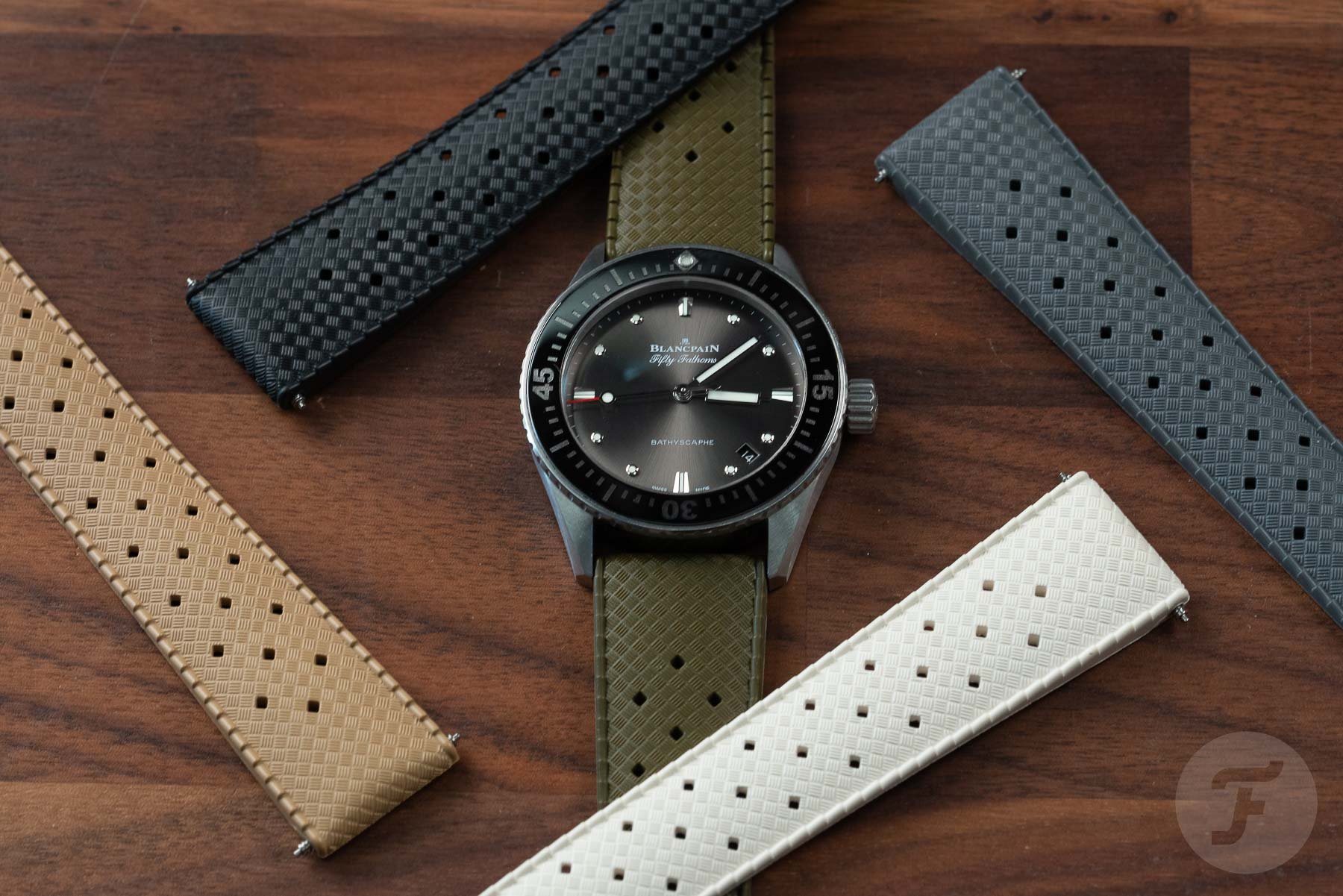
Final thoughts
I hope I’ve been able to more or less pinpoint what the biggest differences are between a more affordable and a more expensive watch. But I also hope that I’ve shown you that there’s something to say for watches in both price ranges and that, most important of all, you can equally enjoy both when you wear them.
I guess many of you Fratelli also own watches at various price points. What would you say are the biggest differences between them, not only in terms of their characteristics but also the wearing experience? Let me know in the comments section!
You can also find and follow me on Instagram: @fliptheparrot

